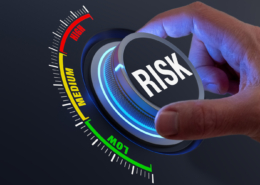Three Lines of Defense: Case Study
A Case Study on Client Due Diligence
📅 July 18, 2024
📅 July 18, 2024
When establishing an organizational model to effectively manage financial crime risk and regulatory compliance, we need to enable cohesive action towards enterprise objectives while also providing segregation of responsibilities and avoiding conflicts of interest. The “three lines of defense” is one well-established model to achieve these goals.
What are the three lines and how do they work together? Let’s take a look at a real-life case study of the three lines of defense.
In our previous article we outlined the three lines model and the responsibilities of each team. To summarize it into a few lines, it can be helpful to consider the second line as defining what needs to be done and the first line as identifying how it should be done. We can illustrate this using an example of controls that may be implemented as part of a client due diligence (CDD) framework. For this example, we’ll start with the second line.
The second line of defense undertakes tasks including:
The second line of defense sets standards for compliance, including:
The first line of defense takes action to implement the requirements set out by the second line.
For the sales team, this might include writing and communicating a sales checklist with questions to help identify if potential client is prohibited. The advantage of doing this early in the process is that resources will not be invested in due diligence for a client that cannot be accepted.
For the Know Your Client (KYC) team, the following are examples of elements that could be included in the process manual written to implement second line requirements:
In our CDD example above, the internal audit function would undertake tasks such as setting out an audit schedule for the sales, KYC, and compliance functions to evaluate the effective application of CDD controls. They would document their findings and ensure any required remediation is completed.
The three lines has been and continues to be an effective risk management model. However, in new and emerging areas like digital assets, in-demand skillsets may be scarce, evolving products and markets require novel and innovative solutions, and there may be a need to adapt quickly to regulatory changes. What adaptations need to be made to the three lines model? View our recorded webinar to find out more.
The digital assets sector presents unique compliance challenges, including a complex and rapidly evolving regulatory landscape, misuse of digital assets in financial crime, and the need to adapt existing risk and compliance frameworks to include digital assets. As this industry continues to grow, with projections indicating substantial market expansion, staying ahead of compliance requirements and future challenges is crucial for financial institutions to safeguard their operations and reputation, while benefiting from the potential of this asset class.
Effective defense strategies are paramount to mitigating these risks and maintaining the highest standards of compliance. Led by industry experts, panelists will assess the integral roles of the first and second lines of defense in maintaining rigorous compliance frameworks and will dive into the future challenges that could redefine regulatory landscapes. Prepare to gain actionable insights and forward-looking strategies to elevate your compliance practices in the fast-evolving world of digital assets.










 The Convergence of Sanctions & AML
The Convergence of Sanctions & AMLThis site uses cookies. By continuing to browse the site, you are agreeing to our use of cookies.
Accept settingsHide notification onlySettingsWe may request cookies to be set on your device. We use cookies to let us know when you visit our websites, how you interact with us, to enrich your user experience, and to customize your relationship with our website.
Click on the different category headings to find out more. You can also change some of your preferences. Note that blocking some types of cookies may impact your experience on our websites and the services we are able to offer.
These cookies are strictly necessary to provide you with services available through our website and to use some of its features.
Because these cookies are strictly necessary to deliver the website, refusing them will have impact how our site functions. You always can block or delete cookies by changing your browser settings and force blocking all cookies on this website. But this will always prompt you to accept/refuse cookies when revisiting our site.
We fully respect if you want to refuse cookies but to avoid asking you again and again kindly allow us to store a cookie for that. You are free to opt out any time or opt in for other cookies to get a better experience. If you refuse cookies we will remove all set cookies in our domain.
We provide you with a list of stored cookies on your computer in our domain so you can check what we stored. Due to security reasons we are not able to show or modify cookies from other domains. You can check these in your browser security settings.
These cookies collect information that is used either in aggregate form to help us understand how our website is being used or how effective our marketing campaigns are, or to help us customize our website and application for you in order to enhance your experience.
If you do not want that we track your visit to our site you can disable tracking in your browser here:
We also use different external services like Google Webfonts, Google Maps, and external Video providers. Since these providers may collect personal data like your IP address we allow you to block them here. Please be aware that this might heavily reduce the functionality and appearance of our site. Changes will take effect once you reload the page.
Google Webfont Settings:
Google Map Settings:
Google reCaptcha Settings:
Vimeo and Youtube video embeds:
You can read about our cookies and privacy settings in detail on our Privacy Policy Page.
Privacy Policy